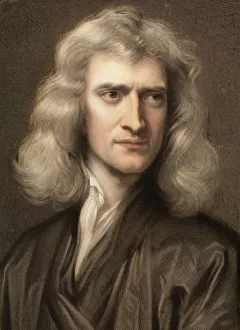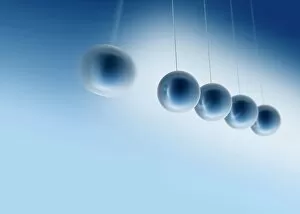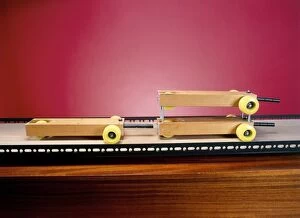"Unveiling the Genius: Sir Isaac Newton and the Laws of Motion" Step into the world of scientific brilliance as we explore the remarkable contributions of Sir Isaac Newton, a visionary physicist who revolutionized our understanding of motion. In this captivating journey, we delve into his life, theories, and iconic experiments that shaped modern physics. Let's begin with a glimpse into young Newton's portrait from 1689, capturing the essence of a curious mind destined for greatness. As an English physicist, he laid down the foundation for classical mechanics through his groundbreaking work on three fundamental laws of motion. One cannot discuss Newton without mentioning his legendary encounter with an apple – an artwork immortalizing that pivotal moment when inspiration struck him. This event led to profound insights about gravity and its influence on objects in motion. Newton's masterpiece "Philosophiæ Naturalis Principia Mathematica, " published in 1687, remains one of science's most significant works. Its title page symbolizes a turning point in our comprehension of nature’s mathematical principles governing motion. Conceptual artworks depicting Newtonian Earth offer us visual interpretations showcasing how gravitational forces shape celestial bodies' movements within our universe. These illustrations invite us to ponder upon the intricate dance orchestrated by these unseen cosmic laws. Amongst various artistic representations lies another familiar sight - Newton's cradle - demonstrating conservation of momentum and energy. This mesmerizing contraption serves as a tangible reminder that every action has an equal and opposite reaction; it embodies one aspect encapsulated within Newton’s second law. As we reflect on Sir Isaac Newton's legacy, let us acknowledge his immense contribution to humanity’s collective knowledge. His tireless pursuit paved the way for countless discoveries and continues to inspire generations to unravel mysteries hidden within nature itself. Whether it be through portraits or caricatures capturing his likeness or symbolic depictions like conceptual art pieces or even playful renditions such as Newton’s cradle – each representation serves as a testament to the enduring impact of Newton's laws of motion.










